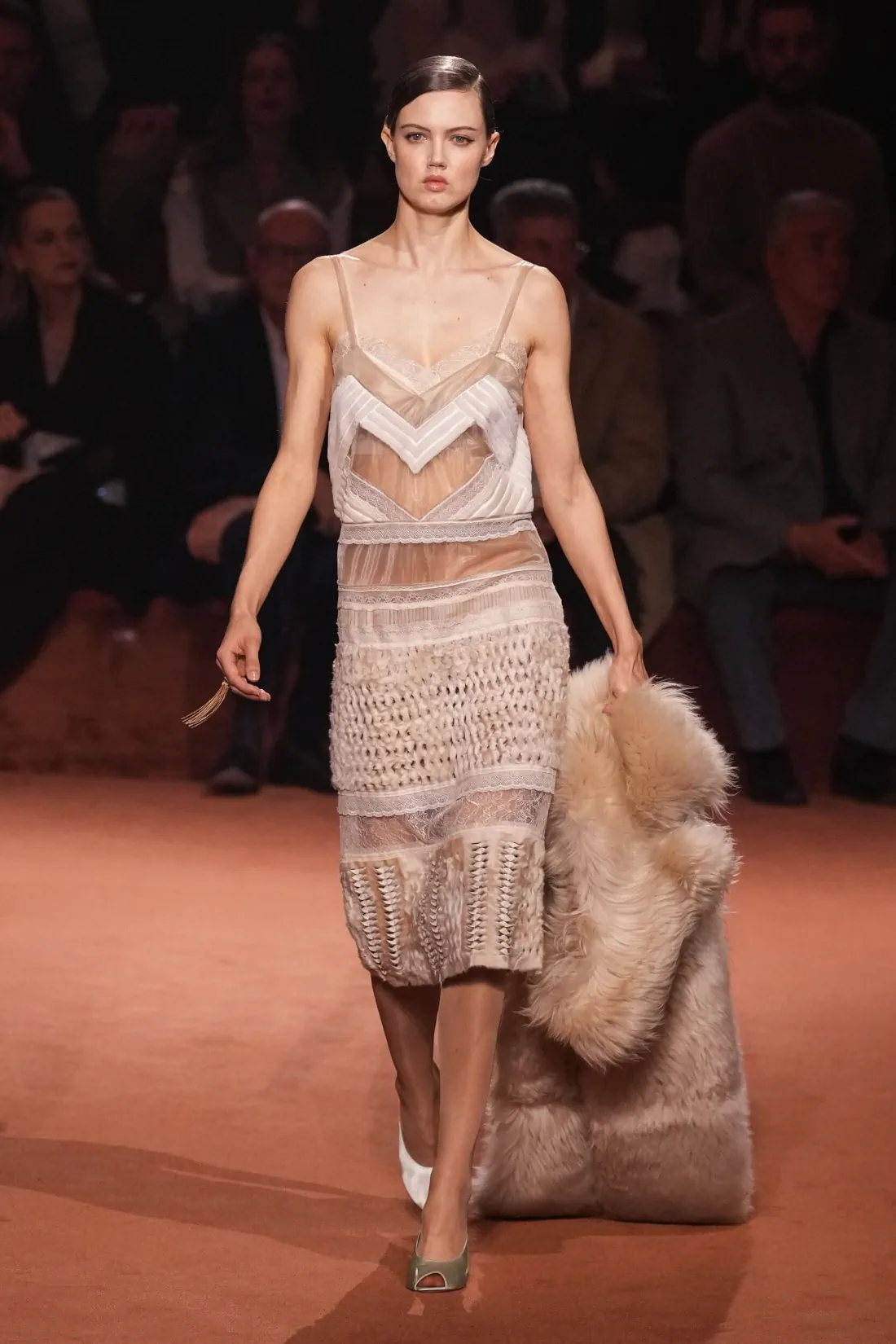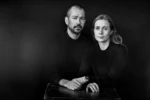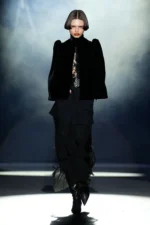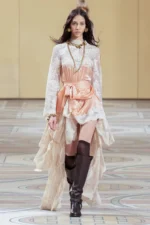Fendi‘s centennial year began with a Fall/Winter 2025 collection that honored its legacy while redefining luxury for a new era. Silvia Venturini Fendi, who directs the artistic vision of the house, delivered a runway spectacle steeped in family history and technical innovation, proving that timeless elegance requires neither compromise nor nostalgia.
The show opened with a nod to the past: Venturini Fendi’s twin grandsons, dressed in equestrian outfits originally designed by Karl Lagerfeld in the 1960s, pushed open doors that replicated those of Fendi’s historic Roman atelier. The gesture, which spanned five generations of the Fendi family, set the tone for a collection that woven personal memories into every stitch. Lagerfeld’s influence lingered in op-art coats and sharp tailoring, but Venturini Fendi’s voice dominated, particularly in her reimagining of fur. Shearling replaced fox, mink and sable in coats and stoles, its lush textures mimicking traditional furs without relying on them. Only two zigzag-patterned mink pieces appeared, a subtle homage to the house’s origins.

Luxury here was tactile and unapologetic. Eel-skin trenches, suede shirts with sculptural sleeves and double-faced peacoats in earthy tweeds demonstrated Fendi’s mastery of materials. Crystal-embroidered checks and metallic brocades added sparkle without excess, while quilted leather dresses with exaggerated shoulders nodded to decades past without feeling derivative. For men, lace-trimmed suiting and yolk-hemmed caban coats combined delicacy with structure, though these pieces played second fiddle to the women’s looks – a fitting choice for a house historically led by women.
Venturini Fendi eschewed archival deep dives, instead channeling the spirit of her mother and aunts who once presided over Fendi’s mirrored Roman salons. Mohair knits with horizontal Degrade stripes, fishnet hats (a tribute to her grandmother Adele) and buns twisted into figure-eight infinity symbols served as quiet homages. The real showstopper was a red polka-dot dress, its intricate craftsmanship underscoring Fendi’s fur atelier expertise, soon to be showcased in a new Milan store.
This collection resisted period cosplay. Drop-waist lace gowns and pequin-striped dresses nodded to the 1920s and ’70s, yet felt resolutely contemporary. “When something is beautiful, it’s always beautiful,” Venturini Fendi remarked, a philosophy echoed in her refusal to anchor the designs to a single decade. Even the 45-minute delay felt deliberate, as if extending the longevity of a moment a century in the making.
©Photo: Fendi






























































































